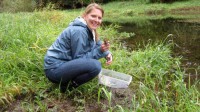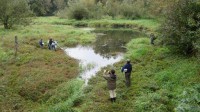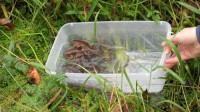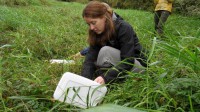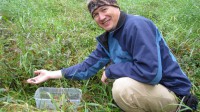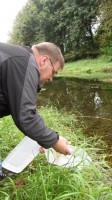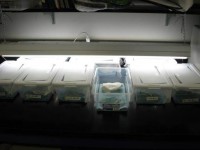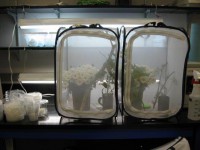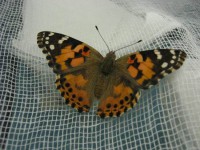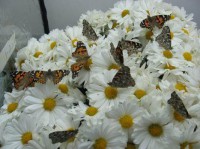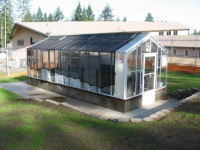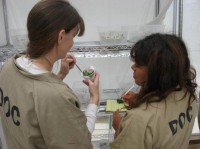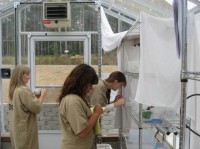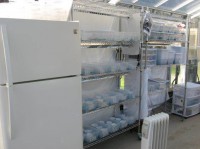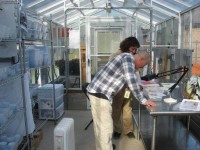By Dennis Aubrey, Brittany Gallagher, and Andrea Martin
In late April three SPP Graduate Research Assistants attended CONFOR West, an annual conference in Western Canada highlighting environmental science, forestry, and collaborative conservation. This year the SPPers, along with another Evergreen Masters of Environmental Studies student, were the only four students from the United States.
This year the conference was held in Kananaskis, Alberta, in the spectacular Canadian Rockies just southeast of Banff. The four of us chose to drive together rather than fly, both to save money and to gain a better appreciation for the landscape and culture of the region. The first night we stopped and soaked in Radium Hot Springs, near the entrance to Kootenay National Park. The next morning we drove up into the Kootenay high country, where we saw a large bull moose crossing a river, and over 50 white-tailed and mule deer browsing near the road in meadows newly emerged from the melting snowpack. After crossing a few passes and traversing northward through long valleys, we made our way up and over the continental divide, simultaneously entering Alberta and Banff National Park. It was still early in the day so before heading south to Kananaskis we turned north and drove about 75km up the famed Icefields Parkway, where we snapped pictures of hanging glaciers and frozen lakes amid towering frosted peaks.
The conference itself was set at the Canadian Rockies and Foothills Biogeoscience Institute, and consisted of two mornings of presentations followed by afternoon activities, with poster sessions and keynote speakers in the evenings. Morning-session presentations were in two formats: 5-minute lightning talks and 15-minute featured presentations. Lightning talks at CONFOR are doubly challenging, as they include self-advancing PowerPoint slides, making practice and timing essential. Some general themes that emerged from the talks given by Canadian students were related to mountain pine bark beetles, tar-sands impacts and mitigation, and involving First Nations peoples in collaborative conservation.
All three SPP graduate students gave presentations on our thesis work. Both Brittany and Andrea took the challenge and gave well-received lightning talks. Brittany presented on her work with the Sustainability in Prisons Project evaluating the effectiveness of environmental, educational, and sustainability programs in Washington state prisons. Andrea talked about evaluating the effectiveness of youth conservation corps leadership programs. Dennis gave a 15-minute presentation which included an overview of the Sustainability in Prisons Project, and a brief discussion of his research with incarcerated women exploring Taylor’s checkerspot butterflies’ use of golden paintbrush. At the end of the conference, Dennis’ presentation was voted best 15-minute presentation and mentioned as a close second for most creative presentation overall.
Another unique aspect of CONFOR West is that it is planned and attended solely by graduate students. This tends to give it a more casual and festive atmosphere than other scientific conferences. Groups went snowshoeing and hiking in the mountains, and informal discussion groups formed in the common area and dining hall. Overall, the trip was a rewarding and educational experience. Many fellow attendees commented enthusiastically on the novelty of SPP, and some expressed interest in the idea of bringing SPP to Canadian correctional institutions. Some of the relationships and perspectives we gained will undoubtedly serve us in the future, allowing us to more effectively collaborate with our colleagues across the border.

















